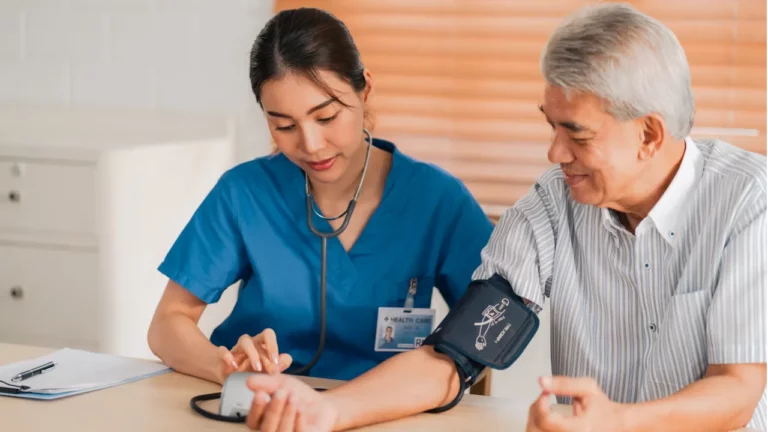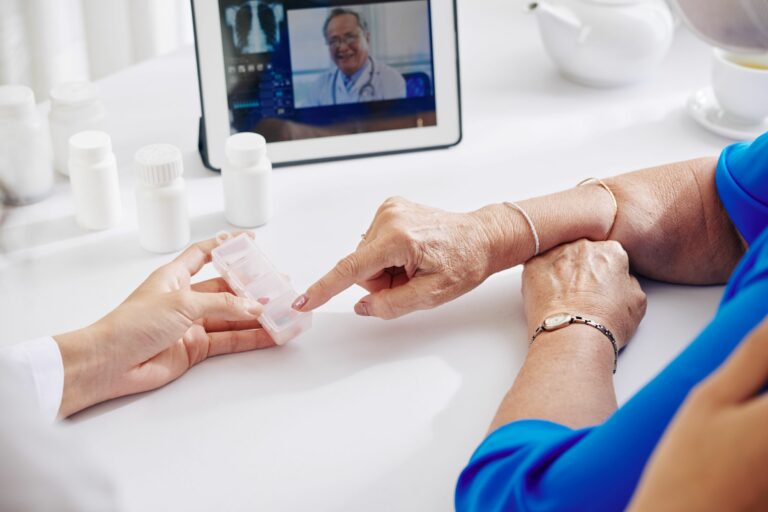Telemedicine is a fast-emerging service that aims to provide access to high-quality, cost-effective healthcare, particularly in the midst of the current COVID-19 pandemic. Providers have been obliged to increase their reliance on telehealth services at the expense of traditional face-to-face patient meetings in response to the present pandemic.
Additionally, telemedicine has the ability to significantly increase patients’ access to high-quality, affordable treatment while maintaining physical distance for the safety of both patients and doctors. Along with virtual visits, patients and clinicians can exchange information via text, email, and mobile phone applications, as well as data from wearable devices.
What is telemedicine?
Centers for Disease Control and Prevention (CDC) defines telemedicine as the practice of obtaining health treatment via the use of electronic information and telecommunications technology while maintaining a social distance. All you need is an internet-connected phone or device to continue receiving medical care while safeguarding yourself and your healthcare provider against COVID-19.
Telemedicine before COVID-19
Telemedicine use has been expanding rapidly in the United States of America. Between 2010 and 2017, the percentage of US hospitals that communicate with patients by video and other technology climbed from 35% to 76%. Additionally, the American Medical Association found that insurance claims for telemedicine surged by 53% between 2016 and 2017. This is most likely related to the increasing efficacy of telemedicine, as physicians are now able to provide an increasing number of treatments remotely.
Medicaid has determined that telemedicine is an appropriate alternative to the more traditional face-to-face patient visit. However, despite the increased use of telemedicine services, legal and regulatory constraints limit their spread. The United Nations Office of the High Commissioner for Human Rights identifies six critical aspects of the right to health as follows: accessibility, availability, participation, accountability, acceptability, and high quality. As such, federal and state rules must quickly adjust to the rising demand for telemedicine and ensure that it can continue to serve the six essential components of the human right to health. America is experiencing a once-in-a-generation moment, and telemedicine policy must react more quickly than ever during the COVID-19 pandemic.
Increased Utilization of Telemedicine during COVID-19
Telemedicine has evolved into a kind of ‘forward triage,’ or triaging patients prior to their arrival to an emergency department, in the midst of the COVID-19 pandemic. Telemedicine has been utilized to examine respiratory symptoms in individuals who may have COVID-19 infection. These symptoms may be part of the early presentation of COVID-19 infection. Direct-to-consumer telemedicine, often known as on-demand telemedicine, has become a popular method for screening patients who are self-quarantined. This method of triage ensures patient-centered treatment while also safeguarding both patients and healthcare workers.
Beyond facilitating triage, during COVID-19, telemedicine has facilitated the rapid deployment of large numbers of healthcare providers and the provision of services when local hospitals and healthcare centers are unable to meet demand. Telemedicine has been used to disseminate healthcare information to both affected and non-infected individuals during this infectious epidemic.
Telemedicine use for chronic illness care has also gained in popularity, and studies have demonstrated similar outcomes for certain conditions, including diabetes and congestive heart failure, when telemedicine is used. The rising use has sparked discussion on how to incorporate telemedicine into healthcare provider accreditation, how to pay telemedicine, and how to restructure clinical care models, among other things.
Remote Patient Monitoring as a Method of Telemedicine
RPM involves the monitoring and transmission of vital signs on a periodic, asynchronous, or continuous basis, including weight, blood pressure, oxygen saturation, glucose levels, heart rate, or heart rhythm. Patients utilize bluetooth devices to record their vital signs via remote patient monitoring. Their practitioner monitors these vital signs in real time using a clinician dashboard or, in certain situations, directly within their Electronic Medical Records (EMR).
READ MORE: How to Choose the Right Remote Patient Monitoring System for Your Practice
What patients think about RPM?
While healthcare professionals are embracing remote patient monitoring as a way to extend care management into the home,a new survey reveals that their patients are equally enthusiastic about using the platform.
Four out of every five participants surveyed by MSI International in May 2021 expressed support for RPM, particularly for chronic illness monitoring, and about half expressed a desire for it to be integrated with clinical care services.
According to the study of over 300 participants, between 65 and 70% said that they would be willing to participate in a remote patient monitoring program with their care providers to monitor blood pressure, heart rate, blood sugar, and blood oxygen levels.
Here’s what the study shows: Remote Patient Monitoring (RPM) continues to grow, accelerated in the past year by COVID-19.
- In the past year, 50% of American adults had a medical appointment moved from in-person to telehealth via phone or video conferencing.
- Along with telehealth, healthcare providers are implementing the use of remote devices to monitor their patients’ health, such as wearables and implants.
- In 2016, 7 million patients monitored their health with a remote technology. By 2020, that figure would have risen to more than 23 million. By 2024, the number of patients using remote health monitoring technologies is predicted to reach 30 million.
As indicated by the survey, patients regard these programs as an opportunity to take greater control of their own health and to play a more active part in care management. They can make adjustments to their daily routines at home by analyzing the data and communicating with their care professionals.
Takeaway
Telemedicine is evolving at a breakneck pace, and demand for this service is growing in response to the pandemic. With the pandemic nearing an end, the majority of healthcare providers using RPM platforms are focusing their efforts on onboarding more patients. Providers and patients have access to Connected Health Technology, have witnessed its use, and wish to continue utilizing it. This may be a significant matter of discussion as providers try to expand their RPM programs and reach out to more and more patients who may be unfamiliar with the platform.
To know more about the benefits of Next-Generation Remote Patient Monitoring Technology, visit DrKumo Inc.








